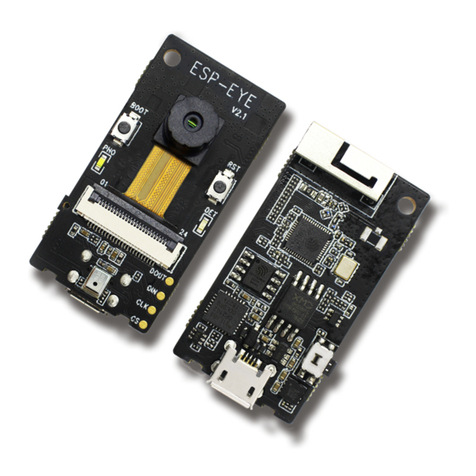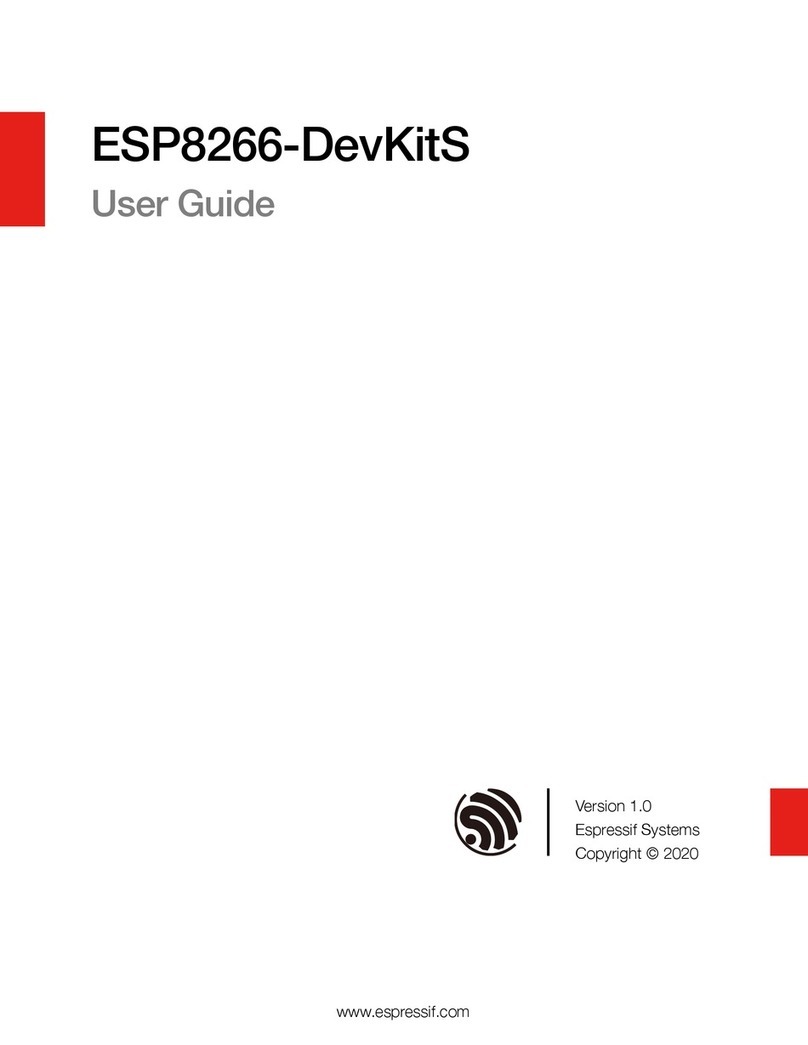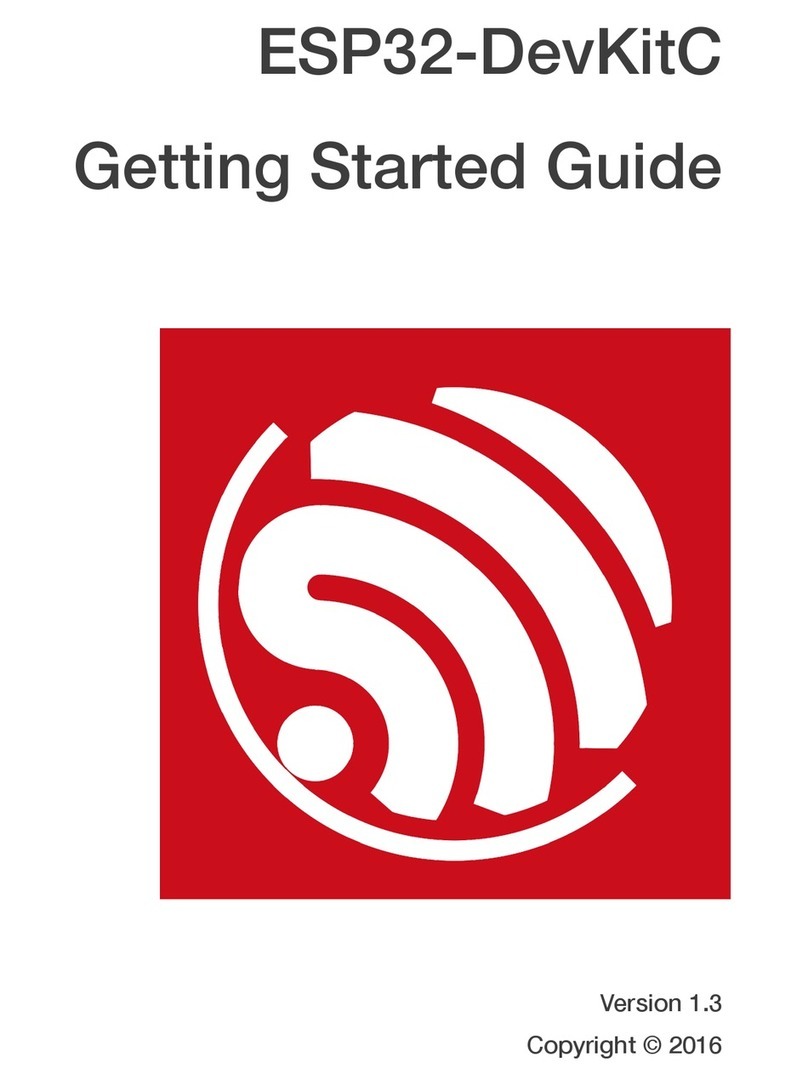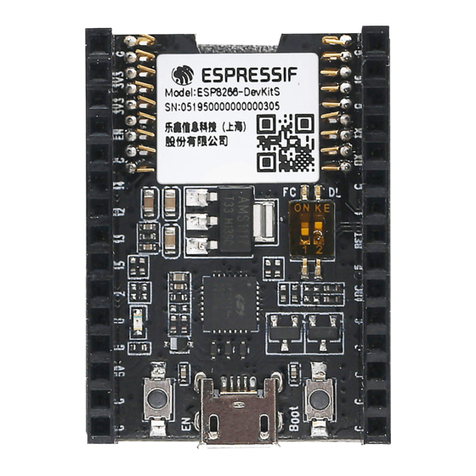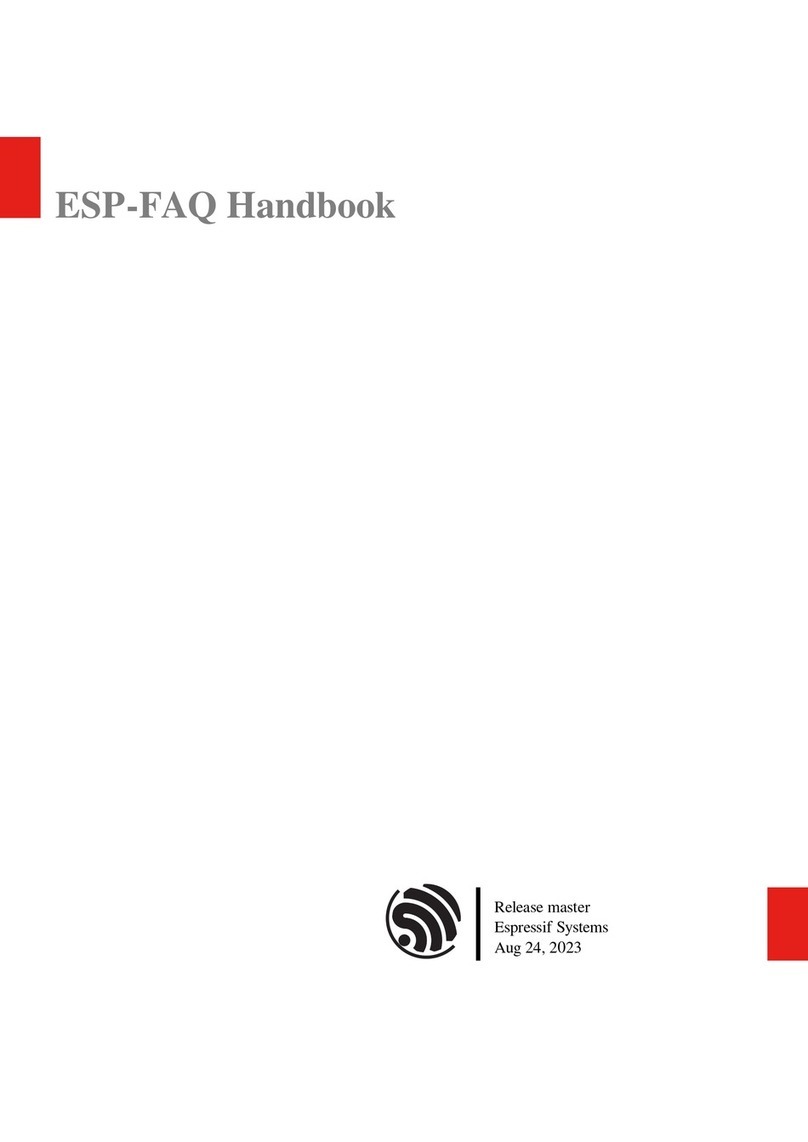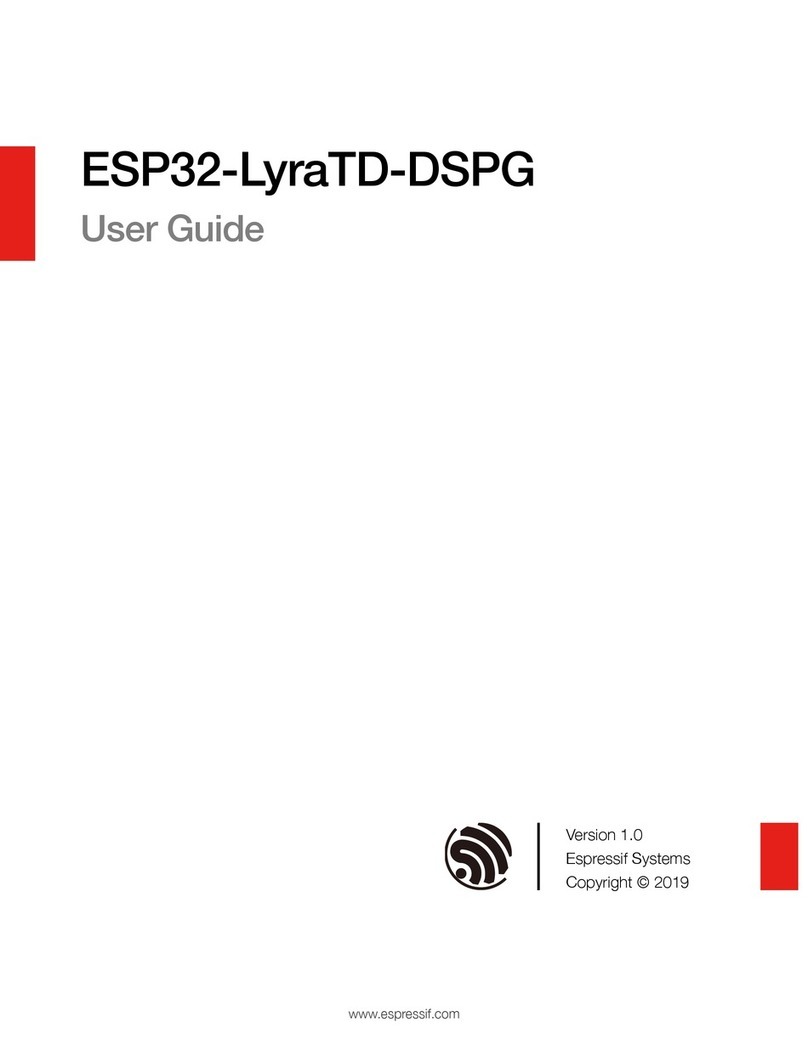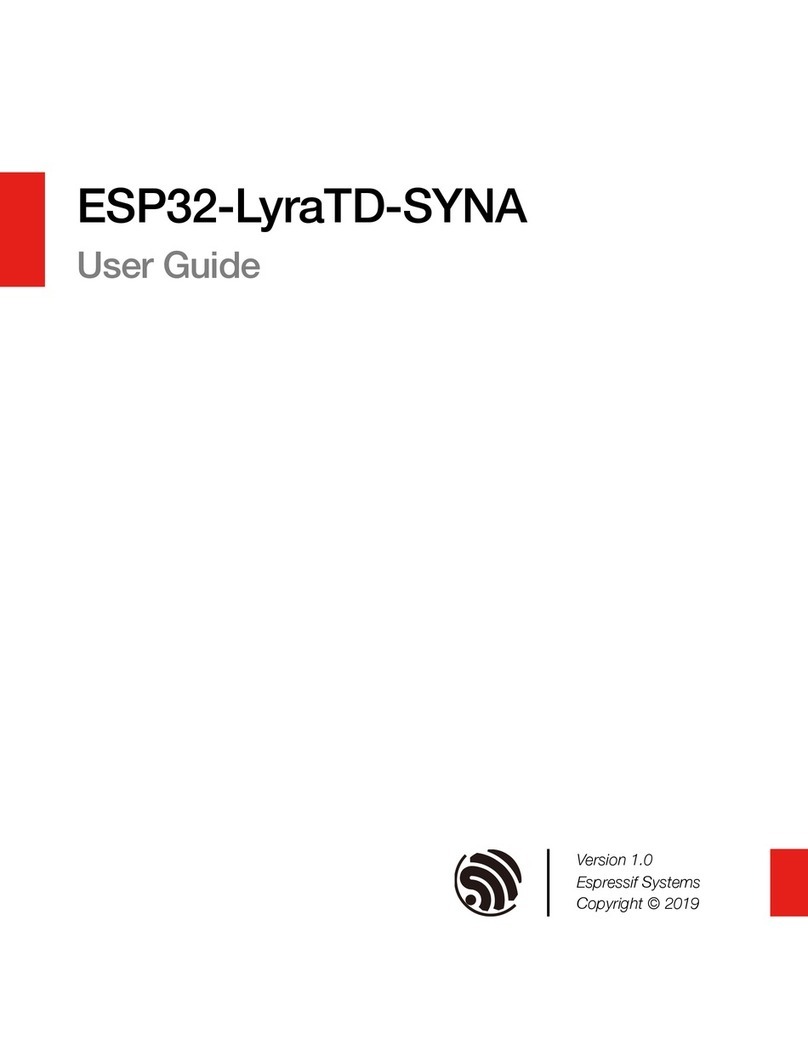1. ESP8266EX 1............................................................................................................................
1.1. Overview!1"....................................................................................................................................
1.2. Specifications!2".............................................................................................................................
1.3. Pin Definitions!3"............................................................................................................................
1.4. Schematic Checklist!5"..................................................................................................................
1.4.1. Power Supply!6"...............................................................................................................
1.4.2. Power-on Sequence and Power Reset!8".........................................................................
1.4.3. Flash!8".............................................................................................................................
1.4.4. Crystal Oscillator!9"..........................................................................................................
1.4.5. RF!10"...............................................................................................................................
1.4.6. External Resistor 12K!10".................................................................................................
1.4.7. UART!10"...........................................................................................................................
1.5. Slave SDIO/SPI!11"........................................................................................................................
1.6. PCB Layout Design!12"..................................................................................................................
1.6.1. General Principles of PCB Layout Design!12"..................................................................
1.6.2. Positioning a ESP32 Module on a Base Board!13"..........................................................
1.6.3. Standalone ESP8266EX Module!14"................................................................................
1.6.4. ESP8266EX as a Slave Device!17"...................................................................................
1.6.5. Typical Layout Problems and Solutions!18"......................................................................
1.7. PCB Layout Design!19"..................................................................................................................
1.7.1. UART to Wi-Fi Smart Device!19"......................................................................................
1.7.2. Sensor!19".........................................................................................................................
1.7.3. Smart Light!20".................................................................................................................
1.7.4. Smart Plug!20"..................................................................................................................
2. ESP-LAUNCHER 21..................................................................................................................
2.1. Overview!21"..................................................................................................................................
2.2. Modules and Interfaces!21"............................................................................................................
2.3. Schematics!24"..............................................................................................................................
2.3.1. Interfaces!24"....................................................................................................................
2.3.2. 5V Power Supply!25"........................................................................................................
2.3.3. Test Module!25"................................................................................................................
